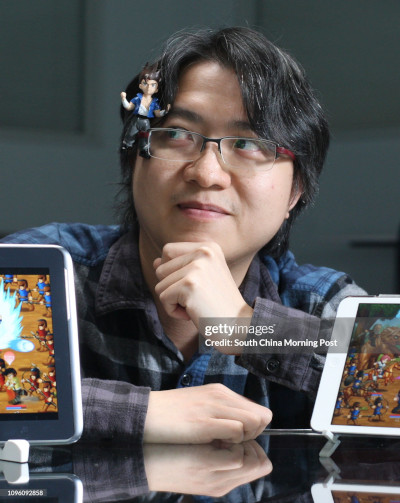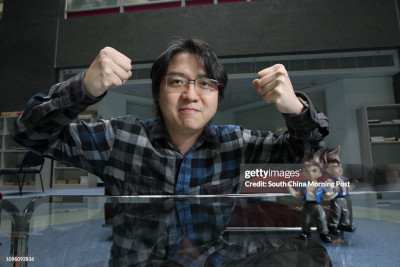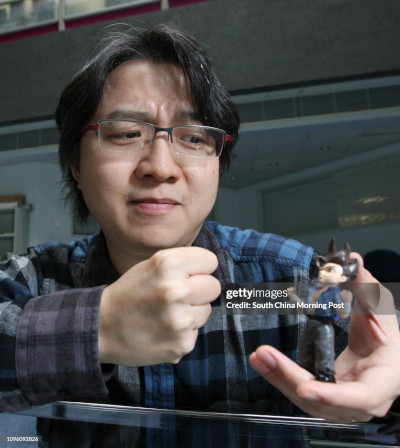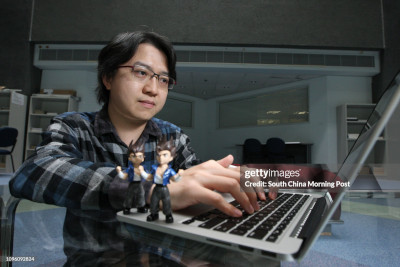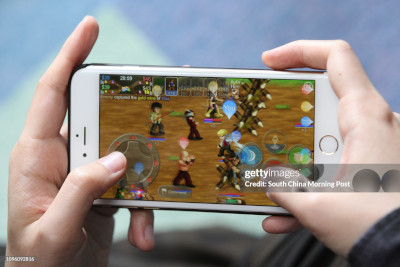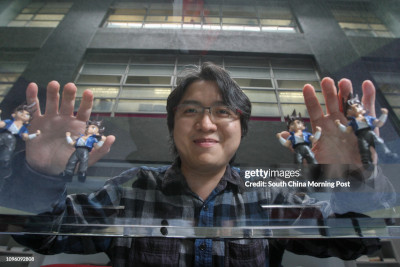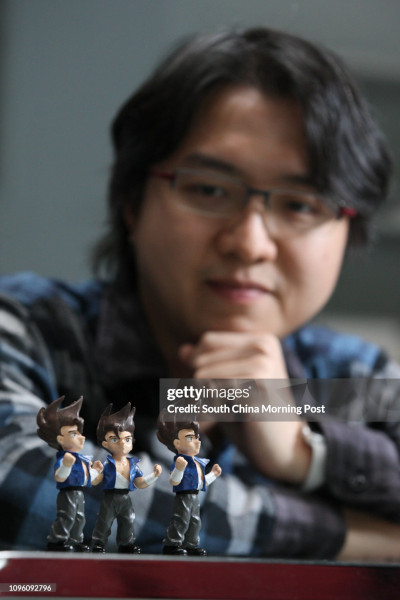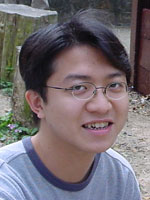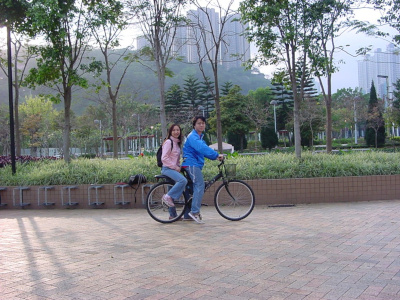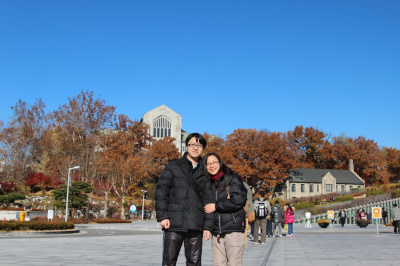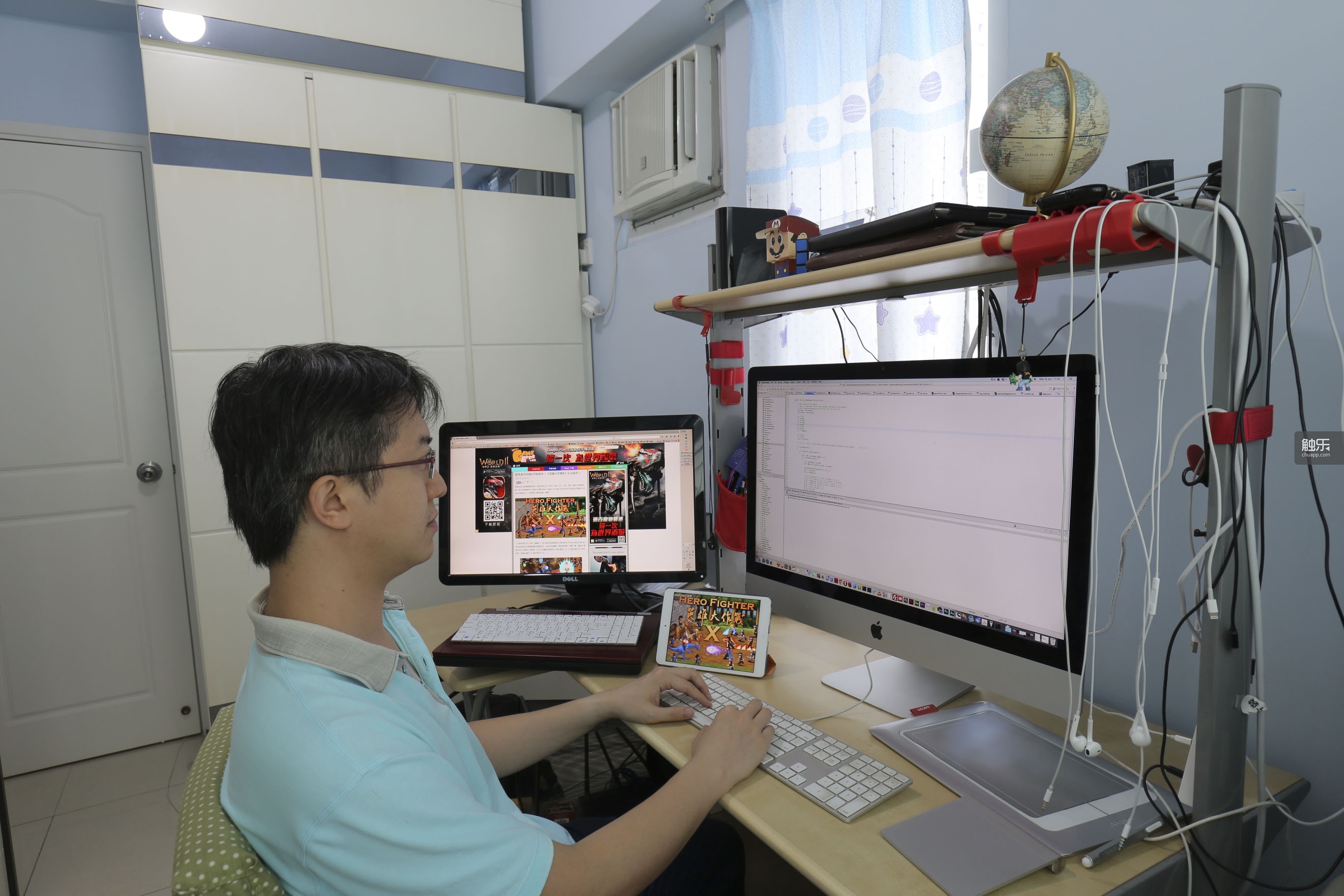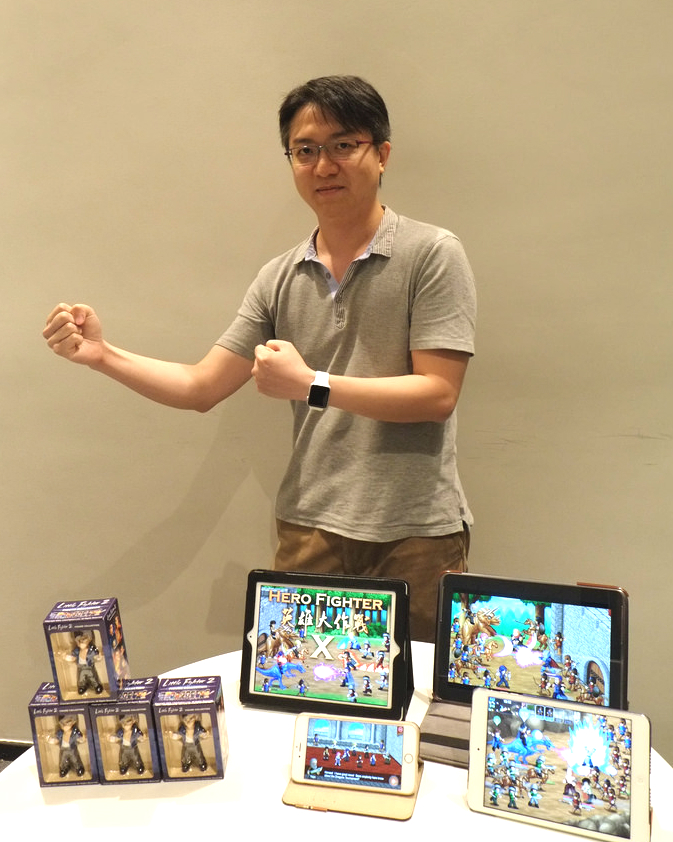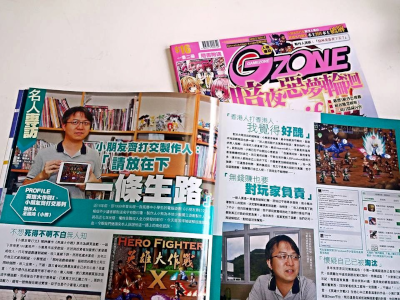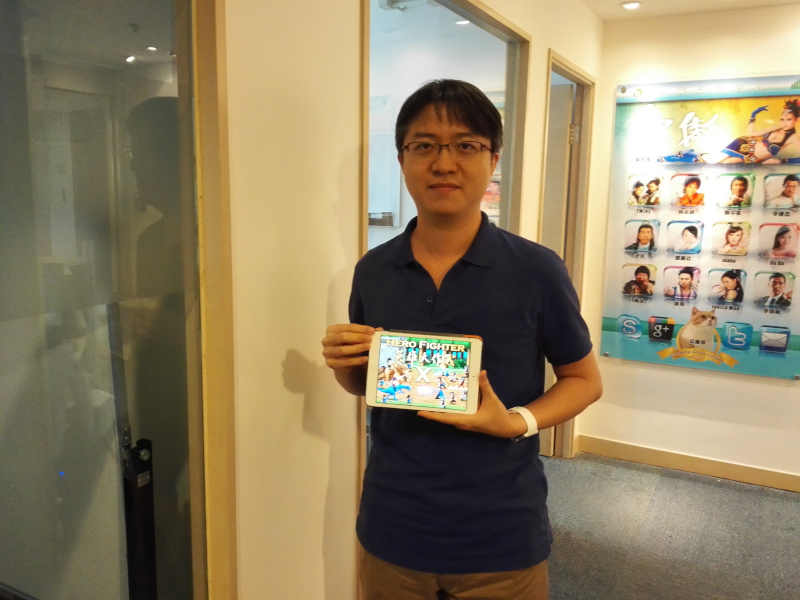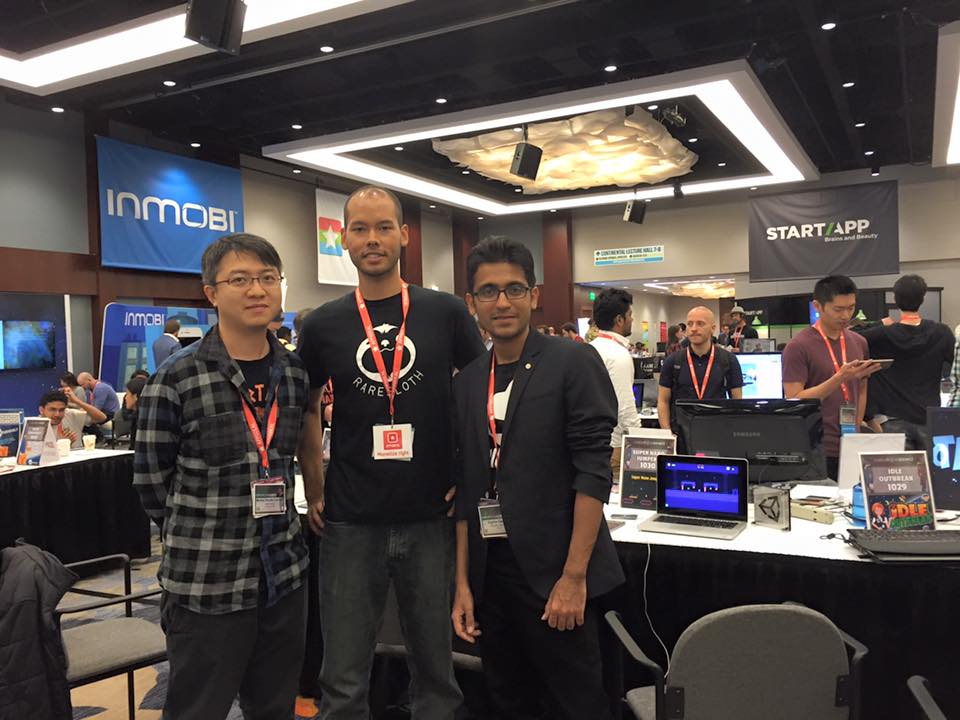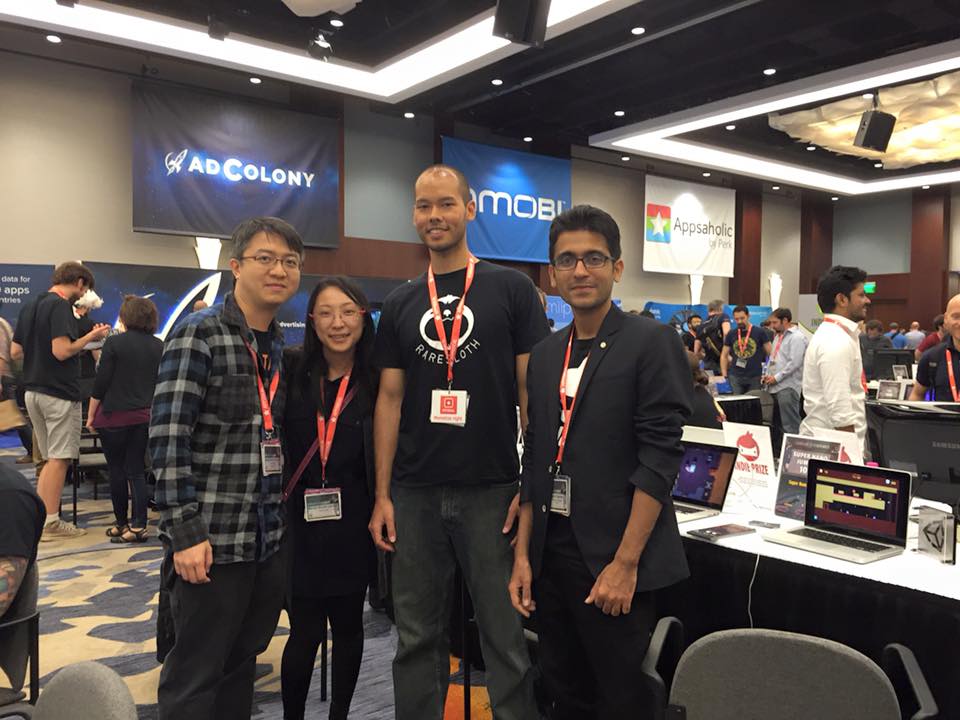Marti Wong: A Journey of Resilience And Perseverance
A Consolidated Biography and Review
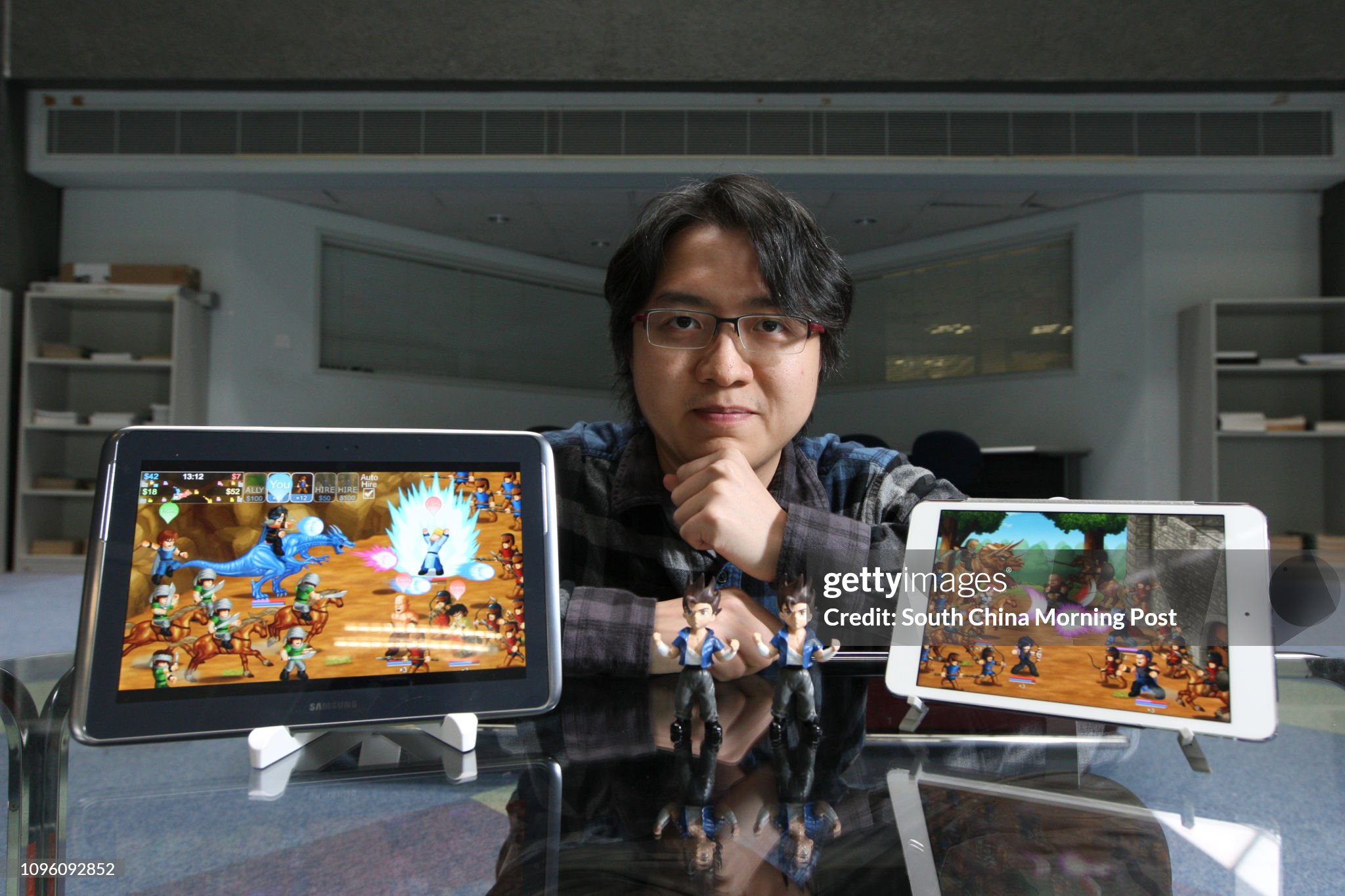
Marti Wong | Creator of Little Fighter 2 and Hero Fighter
Former Software Engineer at Google | Former Software Engineer at Microsoft
Enthusiast in Painting and Photography.
Early Life
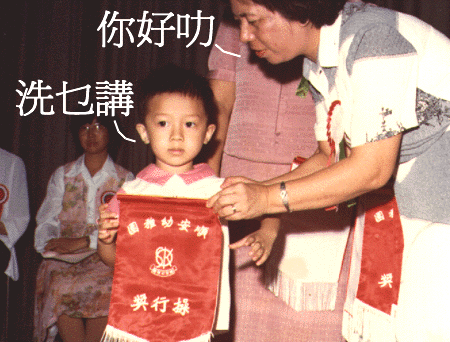
Marti Wong, also known as Bear, due to his love for bears, is a Hong Kong-based game developer born on May 2, 1978. Growing up in the heyday of arcade games, Marti Wong was fascinated by iconic games like Street Fighter and Double Dragon. He dreamed of creating his own games, often envisioning himself as a producer. Notably, Wong is the creator of the acclaimed Hero Fighter and Little Fighter game series.
For additional information not listed here, please visit Marti Wong's Personal Website.
Inspiration
I used to love playing games when I was a child, and I particularly like to play a few games. For example, I like to play 1 on 1 Street Fighter, and on the other hand, I like to play group battles such as Swallowing the World, Double Dragon and so on.
Source: Ejtech
From these early inspirations, Marti Wong channeled his creativity and technical acumen to create groundbreaking games that left a lasting impact on gamers worldwide.
I thought why can't we FUSION (mix) them so that the fun can be mixed?
Source: Startupbeat
Creation Of Little Fighter
Marti Wong embarked on his programming journey, laying the foundation for his future game development endeavors.
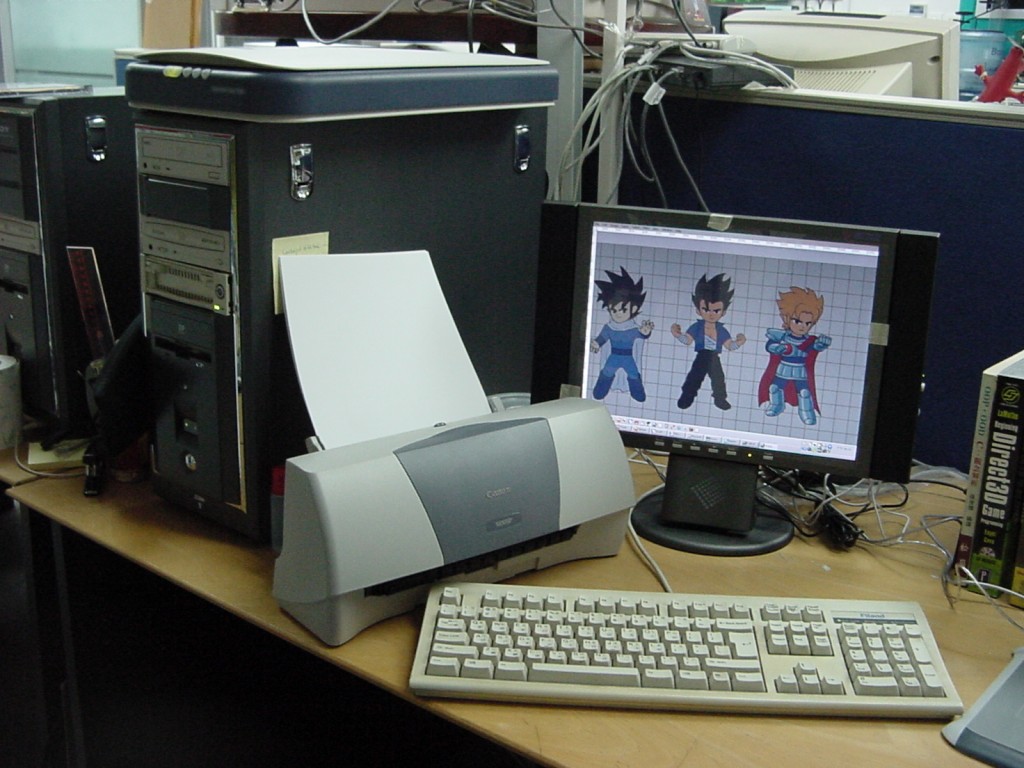
I started to write my first Little Fighter game in the summer of 1995. It is my first game written in C language. In this game, you run with a bunch of kids who just want to fight. You choose to be one of 11 characters, each character has 3 special moves and then you participate in an all out fight. In the game, you can play one on one, team matches or elimination tournament matches. There is up to 8 fighters simultaneously on screen controlled by up to 3 human players. The game modes include the usual championships as well as fighters divided into 2,3 or 4 groups.
Source: LF2.net
Inspired by the thrill of one-on-one combat and multiplayer battles, he combined these concepts to create the inaugural version of Little Fighter, leveraging his newfound programming skills to bring his vision to life. The original Little Fighter game, crafted in C language, was a mere 1Mb in size and featured pixelated characters.

Despite the limited internet connectivity of the time, with 56K modems being the norm, Marti Wong shared his creation on BBS forums, where it quickly gained widespread popularity. This game later became an iconic and nostalgic treasure for a generation of Hong Kong gamers, leaving an indelible mark on their childhood memories.
Based on my own thoughts, I developed the first version of Little Fighter with my own limited technology. Then it was posted on BBS for people to play, and somehow it became very popular. Maybe it’s because the game is very small, only 1MB , and it’s free! yes ! In the past, everything cost money, so it appears that Little Fighter is free, It is rare!. And the game can be played without installation, that is, the threshold is low , so it is very popular.
Source: Ejtech
In Hong Kong's secondary education system, which differs from the mainland's, students attend junior high school followed by high school. During the summer break of 1995, after completing his fifth year of secondary school, Marti Wong dedicated himself to learning C++ at home.
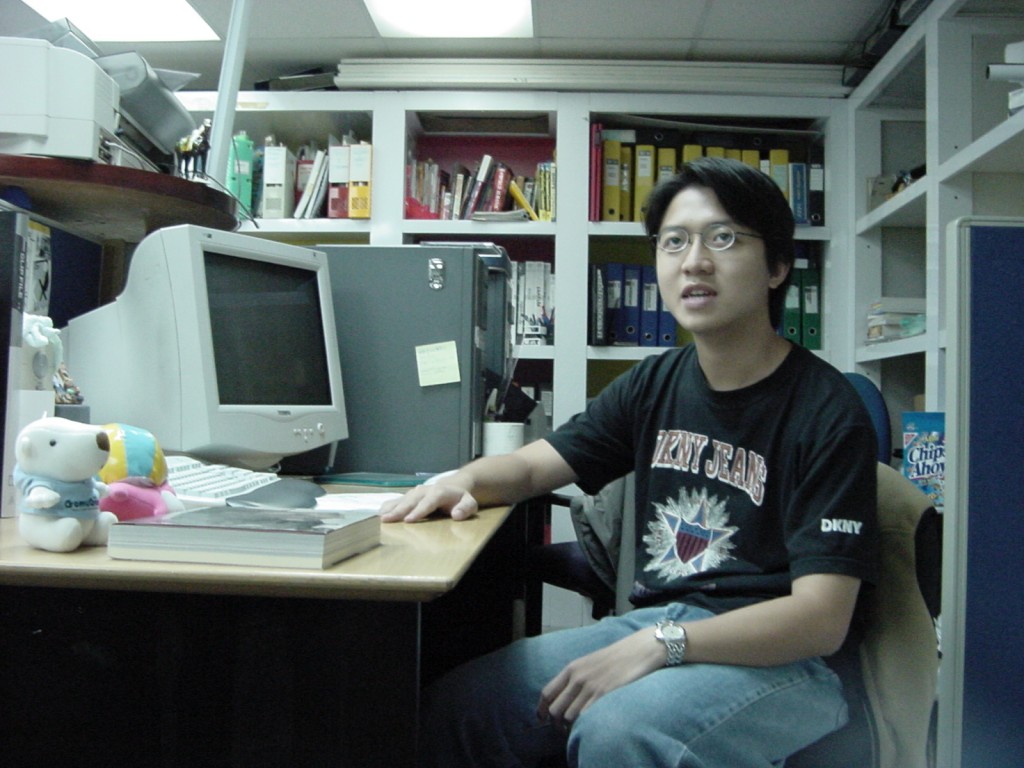
Breakthrough
An internet cafe owner observed that Little Fighter's success could be attributed to its unique multiplayer feature, where four players shared the same keyboard, sans internet connection. This setup, born out of technical limitations, inadvertently became a selling point. Players in the internet cafe would crowd around a single computer, taking turns playing and spectating, drawing in larger crowds.
On the bus, I remember hearing kids talk about the characters and strategies, which made me very happy.
Source: Gameapps
Interestingly, this innovative multiplayer experience was not a deliberate design choice, but rather a creative workaround by Marti Wong, who at the time was not well-versed in network technology and he said:
A year later, I found that many people responded. When I went to college, I wanted to come up with the second generation.
Source: Gameapps
As he entered his second year of college, he embarked on the development of Little Fighter 2, the sequel to his beloved game. This new iteration would build upon the success of the original, further solidifying Marti's reputation as a talented game developer.
Help From Above
The development of Little Fighter 2 received a significant boost when Marti's college classmate, Starsky Wong, joined the project. During their third year of college, Marti and Starsky became dormitory mates, and Marti sought Starsky's expertise in network programming, an area he was not familiar with. Starsky agreed to lend his skills, and subsequently played a crucial role in the game's development, handling the network aspects of the project.
I remember that in order to save time and hope to finish the game before graduation, I missed more than 70% of the classes. For some subjects, I didn't see the instructor for the first time until the exam.
Source: Gameapps
Version 1.0 of Little Fighter 2 was released in 1999. Little Fighter 2 (LF2) marked a significant departure from its predecessor, transitioning from a lightweight, browser-based game to a downloadable client game that offered a more robust experience. The game's art style also underwent a significant transformation, shifting from pixel art to vibrant 2D animations. Furthermore, LF2 introduced support for LAN online battles, enabling players to engage in competitive matches with others.
The game's updates were regularly published online, and it gradually evolved from a simple game with a single character and battle mode to a comprehensive game featuring 24 characters, more game modes, and additional content.

The game's popularity among students was so widespread that it even caught the attention of school administrators.
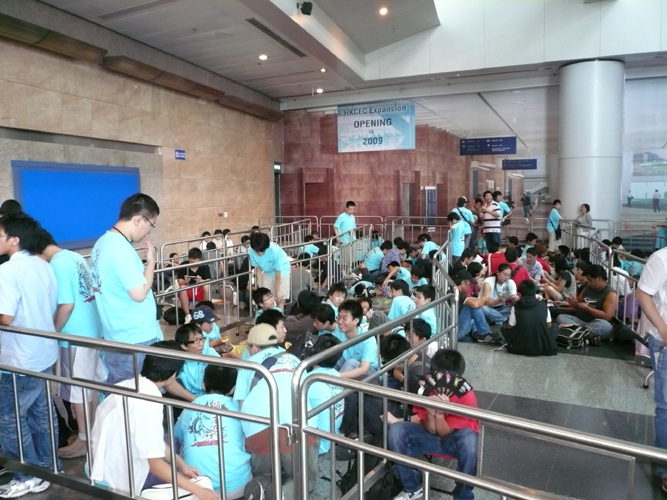
Marti Wong received an email from the middle school computer room administrator, expressing frustration that students were repeatedly playing Little Fighter and deleting the game, only to have it reinstalled again and again. This lighthearted complaint served as a testament to the game's enduring appeal among young players.
A Disappointing Turn Of Events
During its peak, Little Fighter 2 was updated monthly, but each new release would overload the servers, causing them to crash under the weight of immense traffic. In an attempt to mitigate this issue, Marti Wong sought to host the game on the servers of the Chinese University of Hong Kong, but even the department's servers proved unable to handle the demand, crashing entirely. This led to a game of server hopscotch, with Marti constantly seeking new hosts to accommodate the sheer volume of downloads. However, each new provider would eventually drive him away, unable to cope with the crushing demand that consistently overwhelmed their servers.
Unless the game had achieved such immense popularity, it's likely that I would have stopped updating it after completing the initial 11 characters. However, the overwhelming support from fans has been a tremendous source of motivation, driving me to continue improving and expanding the game.
Source: Cool3c.com
Amidst this growing popularity, Marti continually expanded the game's scope. However, despite graduating from university in the summer of 2000 and landing his first job as a mobile game developer, the game remained far from finished, with much work still to be done to bring it to completion.
Solo Creative Journey
After college, Marti's friend Starsky left for the US to pursue further education, leaving Marti to develop the game solo. The workload was overwhelming, with Marti working by day and coding LF2 by night, getting only 4-5 hours of sleep. A year later, the exhaustion became too much, In 2002, Marti took a bold step and left his job to focus on developing Little Fighter 2. To make ends meet and support his living expenses, he resorted to freelancing, bidding on projects to offer his web development and Flash game creation services to clients, in a bid to earn a steady income. After an intense six-month sprint, the game was finally finished. On September 27, 2002, Marti released the final update, version 1.9, marking the end of a five-year journey that began in 1998. With this milestone, Little Fighter 2 - a game that had become a cherished memory for a generation of Hong Kong players - was complete.
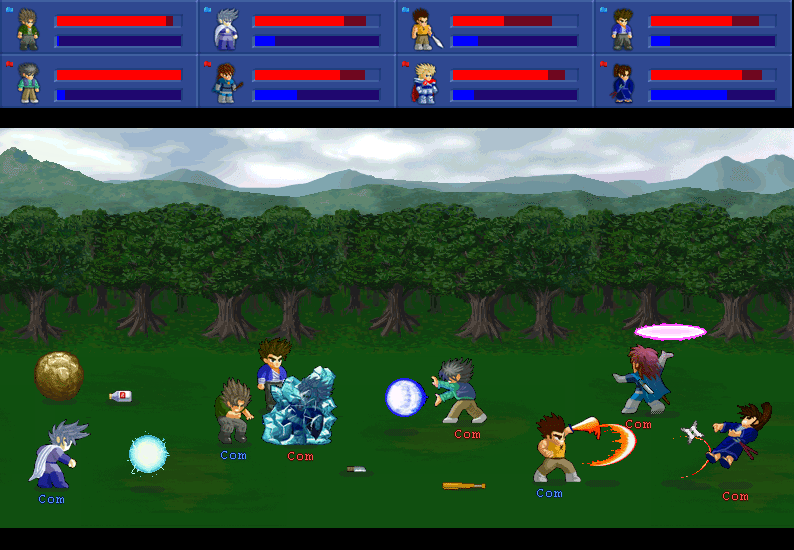
For more information concerning Little Fighters, visit LF2's Official Website
The first and second generations of Little Fighter were both offered as free games, reflecting the series' origins as a personal passion project rather than a commercial endeavor. Despite achieving immense popularity, Marti never received any financial compensation for his work. Nevertheless, the game's widespread recognition and acclaim made his efforts feel truly worthwhile, validating his dedication to creating something special for the gaming community.
In 2003, a game development company approached Marti with a proposal to adapt Little Fighter into a commercial online game, Little Fighter Online. Marti agreed to collaborate, contributing his expertise to the game engine and initial design.


The online game was officially launched in Hong Kong on October 22, 2004. Given the existing popularity of Little Fighter in Hong Kong, Little Fighter Online also enjoyed significant success and acclaim, further solidifying the series' reputation in the region.
The collaboration agreement between the game developers and Marti stipulated a revenue-sharing model, where Marti would receive a percentage of the game's earnings. However, despite the game's immense popularity, Marti's share of the profits was unexpectedly low, suggesting a disproportionate distribution of profits.
In an interview with Touch Music, Marti revealed:
Due to my inexperience and lack of negotiation skills at the time, I didn't reap significant financial rewards from the collaboration. While I didn't disclose the exact figure, I can say that my earnings were modest. If I had secured a better deal, I wouldn't have needed to continue working on other projects.
Source: Cool3c.com
Love In The Midst Of Chaos
Following his departure from his previous employer, Marti Wong relocated to Shanghai and joined Microsoft Shanghai as a member of the Small and Medium Enterprise Server Department. During his tenure, he was responsible for designing and developing user interfaces, leveraging his expertise to enhance the user experience.
At that time, Carol worked at a neighboring toy company. She approached Marti Wong, seeking his expertise in "magic". As Marti Wong was known for his "magic" skills, he, in turn, seized the opportunity to ask for her phone number, humorously describing it as "hitting the snake with the stick."
This chance encounter led to a smooth and natural progression in their relationship, eventually bringing the two together.
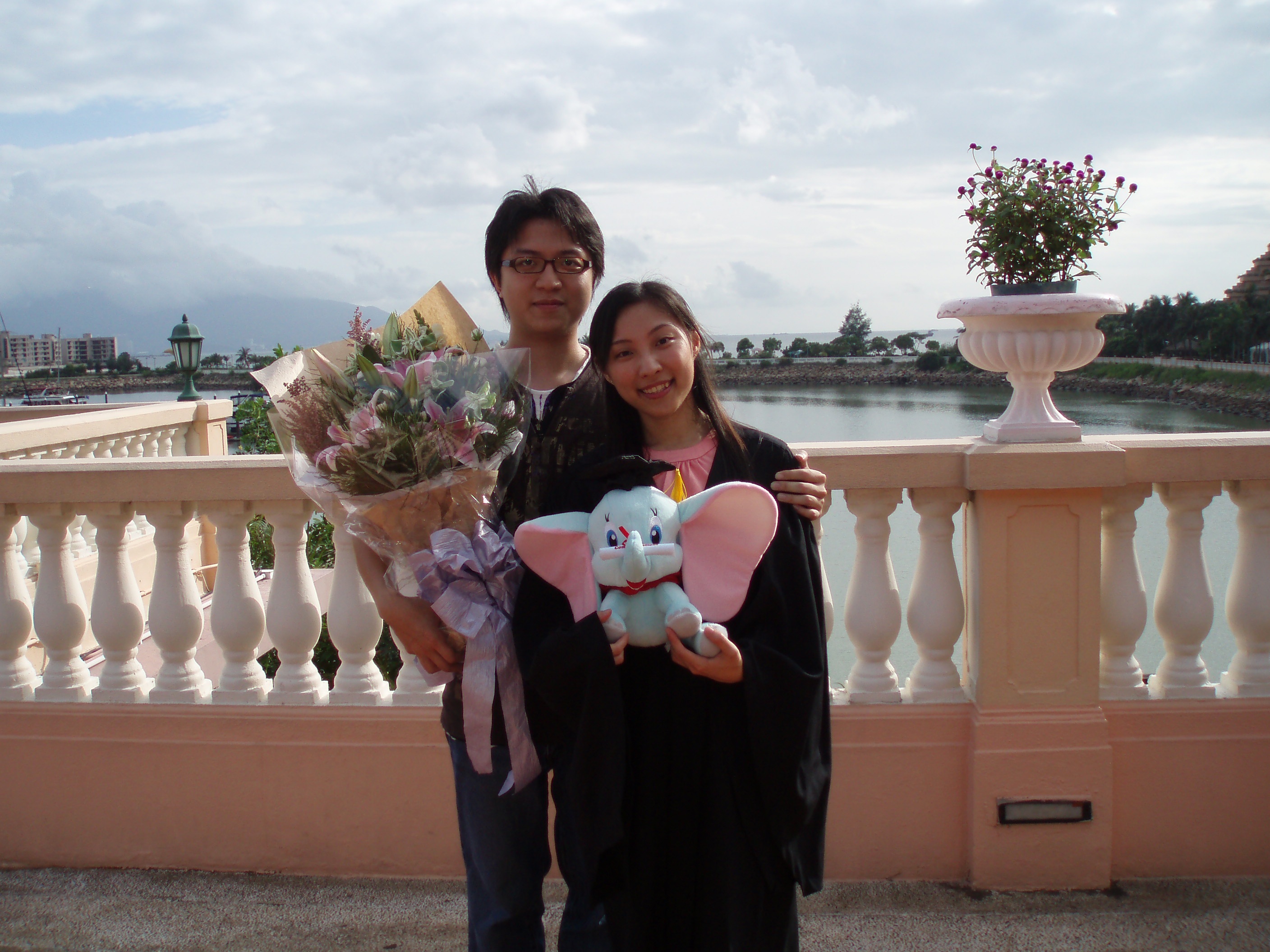
Marti Wong spent two years at Microsoft Shanghai before leaving in 2008 to support his wife, Carol, in Hong Kong. Carol's mother was in poor health, requiring Carol's care, and Marti Wong made the difficult decision to resign from Microsoft and relocate to Hong Kong to be with his family. He described Carol as "very rare", expressing his deep appreciation and love for her.
Meanwhile, upon returning to Hong Kong, Marti Wong struggled to find a job that aligns with his aspirations. However, he had always harbored a passion to create another game of his own.
A New Venture Rises From The Ashes
Following the success of Little Fighter 2 (LF2), Marti Wong's burning desire to pursue his dream led him to take a two-year leap of faith and embark on developing "Hero Fighter" (HF), a game that he hoped would become his next major breakthrough.
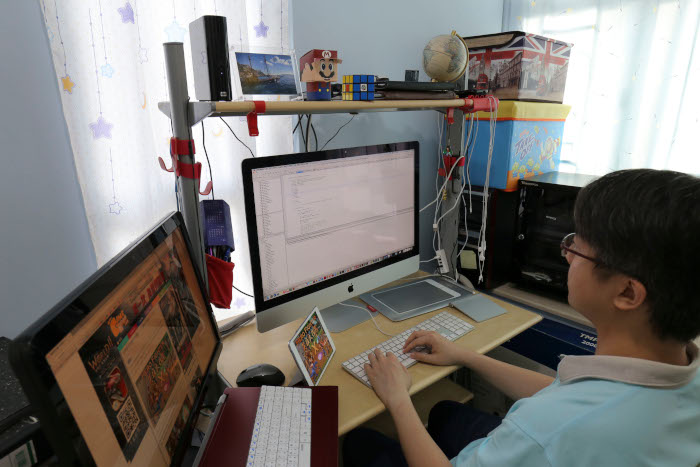
When asked why he chose the name 'Martial Studio Limited' for his company, Marti explained that the name has a dual significance. Not only is 'Martial Kung Fu' his favorite game, but the word 'Martial' also has a personal connection, as it is related to his wife's name, Carol
In addition to the fact that Martial Kung Fu is my favourite game, type is actually AL related to my wife's name, Carol related.
Source: Gameapps
Marti Wong's family, particularly his mother, disapproved of his decision to pursue game development, deeming it a frivolous pursuit and a waste of his youth. She constantly sought to secure a stable job for him through her connections, worried about his future prospects. However, his wife, Carol, stood by him unwaveringly, encouraging him to persevere and see his vision through to completion.
She never said, "Give up on this foolish dream and find a job." Instead, she urged me to work hard, finish what I started, and not surrender halfway. She believed that if I abandoned my passion, I would regret it in the years to come.
Source: Cool3c.com
With Carol's unwavering support, Marti embarked on "Hero Fighter" in the second half of 2008, and the first version was successfully released in 2009.
Unlike Little Fighter 2, Hero Fighter marked a return to web-based gaming built in Flash technology. It was Marti Wong who single-handedly created all the artwork, from concept to completion. Similar to LF2's initial release, Hero Fighter launched as a simplified version featuring only two or three characters and single-player gameplay. Through continuous updates and improvements, it evolved into a comprehensive multiplayer online game. Notably, the development process for Hero Fighter was even more arduous and challenging than its predecessor.
In a candid interview, Marti Wong, founder of Martial Studio Limited, shared a personal and professional glimpse of his journey, revealing the passions and inspirations behind his success.
Are there any special business calculations before development?
Actually, there was no precise business calculation beforehand. I just thought it was fun for myself and a few friends ( yes ! When Marti Wong develops games, he first needs to find them fun, so the main QC tester of the game is himself !)
So what if 3 people squeeze into one keyboard to play 3 dozen games? This is really a powerful idea!!
This was not intentional, it was just unintentional. Because I didn't understand NETWORK technology at the time, I was forced to develop multiplayer games like this. ( This unintentional addition made the game even more popular!)
What works have you been influenced by during the creative process ?
Actually, I have been influenced by many game works, such as "Street Fighter", "Story of Blood", "Double Dragon", "Tomahawk", etc. Because at that time, I liked playing these kinds of games the most, so I was very careful when developing games. be affected to a certain extent. In addition, although " Little Fighter " is an action game, it still has the same command-input operation method as a fighting game. In addition, I also loved watching anime works such as "Dragon Ball" and "Saint Seiya" at that time, so those wave-making moves were also included in the game.
What difficulties did you encounter during creation? How did you solve it in the end?
In the past, it was difficult to find information due to inconvenient access to the Internet. However, BBS (electronic bulletin boards) where useful information can be found are very scattered. I often spend a lot of time reading, but only get very little. Useful information can get twice the result with half the effort. In addition, some technical problems required reference books, but those reference books were as big and heavy as bricks, and expensive (usually 400-500 yuan each). I didn't have money to buy them at the time, so I just went to the library to borrow them. At that time, my English was not good enough to read those reference books. Fortunately, there was a brother Qi who had been playing since childhood. He helped me a lot with English and technology, but unfortunately he has passed away now. Because of the above reasons, I am very "homey" as a whole, but I have also been trained to be able to focus on one thing for a long time.
At that time, you drew all the game characters yourself?
That's right. I had just learned how to use Photoshop at that time, so I did't have to slowly draw bitmaps for each character, because I had tried to draw a character John before, and it took 2-3 weeks. At that time, I thought to myself, Oops, if I draw at this pace, when will it be completed? I am a student myself and have a lot of homework to do. What should I do? So I thought, no matter what, how many characters can I make? I finally finished it without realizing it.
At first, I thought you and another co-developer Starsky Wong were working together to create the character, but it turned out to be the work of one person. So what kind of work is he responsible for? How did you meet?
Starsky joined in episode 2. He is mainly responsible for network work. He and I were college classmates. We lived in the same dormitory as his roommates in our third year of college, so I asked him if he was interested in producing together, and we started a cooperative relationship. But even though we were co-developing games, he and I actually spent most of our time playing PC games in the dormitory. He must have been playing "Diablo 2" at the time. Many times when he said he had to do school homework, I could't tell him, because We wanted to save the world, so we all put aside our worldly affairs and entered the world of "Diablo 2" (everyone laughed).
So "Diablo 2" actually had a great influence on your game development?
Yes, there was a character who appeared in "Little Fighter" who would leave a line of fire while walking. The inspiration was a similar character from "Diablo".
How do you make the game more interesting? Think about it yourself or refer to players' opinions?
Since the new version of "Kids Together" was launched very intensively at that time, basically every new character would have a new version, so we would continue to receive feedback from players, so that the game could be continuously improved. In addition, the originally encrypted game settings were hacked, so we simply made the game's character FILE public so that everyone can give further opinions on the game and participate in the revision. On the contrary, because of the revision, the game has further developed. If there had ever been a Twin Brothers version or a Zelda version, this was unexpected.
The latest work Hero Fighter X is a perfect combination of fighting + adventure + real-time strategy, can you briefly introduce the game?
The most special thing about this game Hero Fighter, There are so many fighting games, but I have never tried one that can bring a team of soldiers to a duel, just like the melee in the Three Kingdoms or Warring States era.
Do you have any special ideas for game content updates?
I hope to make a complete story and further create super bosses, but in the end it will always be based on how much revenue the game has and whether it can be sustained, otherwise all updates will be difficult to achieve.
What are your expectations for this new work?
The reader should take note that this question was aksed when Marti began developing Hero Fighter.
In fact, this new work Hero Fighter is my last experiment to see if I have Outdate and am no longer suitable for the game market. However, in the past 10 or 20 years, I have experienced countless failures, so I am not very confident this time.
Why do you think of developing games? Because you like playing video games? Or for other reasons?
Since I was in elementary school, I would often think about it when playing games. If I were a game producer, I would click and click. Then in the fourth grade of elementary school, I accidentally learned to write program, so I started playing games and creating.
Why not join a large game company? Instead, do it as a fan? Aren't you afraid of doing it completely in vain?
The reason is that I am a person who likes to talk completely about game design, so I make games in a fan style. When it comes to whether I'm afraid of working in vain, of course I'm not afraid. The reason is that I originally planned to complete the production in two or three years, but I didn't expect that it would take three years and three years. Unknowingly, it has already been 20 years. It ’s hard to say whether I worked for nothing, because I encountered two major disasters:
- The game was hacked (I only made money in the first few months in 2012), which reduced my income.
- From 2009 to March 2014 During this period, the American Flash Game advertising company Mochi Media, which was my main source of income in the game, ended, which directly caused me to lose my main income.
Which producer do you admire most?
Shigeru Miyamoto, Toji Inafune, and the producers of Street Fighter, they all have a lot of influence on me.
What do you think of the current gaming industry? Do you think there are many unhealthy phenomena?
To be honest, I don't like modern games very much. Many of them seem to have no soul and cannot be compared with previous games.
After many years of game development, do you feel that you have a sense of mission? Just like the hero character in your game? To bring order to chaos or something?
I dare not say this, but I always feel that games can be made more satisfying and interesting. I always develop games based on this principle.
What is your biggest personal goal in the gaming world?
Being able to open my own company and produce fighting and historical games is my biggest goal.
What do you think about Hong Kong people developing games in the face of large game manufacturers from the United States and Japan?
In addition to Hong Kong's own market, we also need to rely on China and other overseas markets. However, how to make good money in the mainland market (no longer being hacked) is another problem.
In the 20 years of game development, have you ever encountered any pressure? How did you overcome it in the end? Has there been any big change in your mental journey?
No pressure at all. In fact, the pressure mainly came from the financial aspect. Because of the two major disasters mentioned above, my income suddenly dropped significantly, so that I later had to transfer to Microsoft in Shanghai, but I only worked there for about two years. As for the passion and belief in game development, not much has changed.
I find that your personal information keeps appearing and deleting on Wiki. Is it because you want others to focus on your works instead of you?
Actually, I have no idea about this situation. (Conspiracy theory: Is there someone who doesn't want Little Bear to become more famous, so he wants to suppress him in the Wiki?)
What three things in your life make you most proud ?
- A good wife, find a wife who can improve my fighting ability, better than the girlfriend on the Internet who is willing to fight McDonald's with you.
- Can maintain the fighting spirit until today.
- Little Fighter is supported by a large number of players.
How did the love story with your wife develop? I believe many fans of your game would like to know!!
When I was working in my old company, I often had to go to the company next door to buy some magic supplies. Yes! I knew how to do magic!! Because this way, the sparks slowly started to rub off. After I caught up with it, I stopped doing magic anymore.
Finally, what would you like to say to the readers of Gameapps.hk?
I only play games and have fun, you can download it quickly!! I hope you all like it, this time I have to rely on the shop to eat porridge and rice!!
Source: Gameapps
Marti Wong aimed to intensify the sense of warfare in Hero Fighter, introducing a mount system to enhance gameplay. He also revolutionized the game's layout, transitioning from a single-sided scroll with limited horizontal movement in LF2 to a multi-sided scroll featuring a vast, expansive map. Dissatisfied with the limited props in LF2, he incorporated larger objects like trees and boulders, providing more scope for the players to maneuver.
Throughout Hero Fighter's development, Marti Wong strived to surpass Little Fighter 2, setting higher standards for character actions. During his downtime, he dedicated himself to studying animation techniques, meticulously crafting over 300 frames of animation for each main character - a staggering undertaking for a solo developer. As a result, new heroes were introduced at a slower pace, with each character launch taking around one to two months. Reflecting on this challenging period, Marti Wong smiled:
It was incredibly tough, and my hair turned white!
Source: Binance.com
Community Feedback: A Source Of Inspiration And Frustration
When the game development process became overwhelming, Marti Wong would seek solace in the community's feedback. He'd visit the Baidu Hero Fighter Post Bar, meticulously reading through player comments and responding to each one personally. In one instance, a player inquired about acquiring a specific character, while another player deemed the character useless. Marti Wong responded with reassuring seriousness:
It's useful.
He shared that working alone in his house could be isolating, with only his wife offering occasional encouragement, despite not fully understanding his work. He confessed to feeling disheartened at times but finding solace in the players' comments.
When I'm deeply discouraged, I turn to the post bar. Reading their messages is like a shot of adrenaline, revitalizing my energy and motivation to continue. Over time, I've formed connections with a few regulars in the post bar, and our conversations have become so intimate like old friends.
Source: Binance.com
Happiness Shattered In A Heartbeat
Hero Fighter distinguishes itself from Little Fighter 2 in a significant way: it incorporates advertising and a payment system. To address financial sustainability, Marti Wong integrated advertising into Hero Fighter and developed a unique account system. For a one-time payment of 65 yuan, players can upgrade to a premium account, granting unrestricted access to all heroes, including rare characters. Notably, the game remains free to play, with no additional paid items beyond the premium account upgrade.
Marti Wong had high hopes that the premium account would generate significant profits. Initially, the response was encouraging, with many players upgrading in the first two or three months. However, this success was short-lived. Hero Fighter was soon pirated, and the cracked version allowed players to access all heroes.
I still remember one time when I saw a magazine introducing my game. I opened it excitedly. Unexpectedly, the first page taught people how to crack my game and download it for free to play. It made me feel very sad.
Source: Startupbeat

The pirated version spread rapidly, and soon, few players were willing to pay for the game.
The crackers disseminated the game through media, and it quickly proliferated. At its peak, Hero Fighter had over a million registered users, now standing at around two million.
Source: Startupbeat
Marti Wong expressed his frustration:
Many games with a similar player base can generate substantial revenue. I'm at a loss for how to monetize my game.
The piracy issue left him feeling disheartened and demotivated, questioning the point of continuing to develop the game.
It seems futile if my work is just going to be stolen again.
A Last-Ditch Effort In The Face Of Disappointment
In 2013, the game's update pace began to slow significantly, prompting concerns from mainland players. They took to Baidu Zhidao, inquiring about the game author's well-being, wondering if he was injured or otherwise unable to release the anticipated 0.75 update. Some empathetic players attempted to comfort Marti on Tieba, suggesting he temporarily halt development, secure a job, and even offering donations to support him. Unfortunately, these gestures of goodwill failed to provide any substantial relief.
At that time, I was depressed for two years. I became very withdrawn and didn't want to go out and communicate with others at home.
Source: Startupbeat
The final blow came in March 2014, when Mochi Media, the advertising company that had been Marti's sole source of income besides outsourcing work, filed for bankruptcy. This sudden loss of revenue left Marti with no choice but to reconsider his options.
At that point, I felt it was time to abandon my dreams and seek stable employment.
Source: Chuapp
He reflected. As a result, Marti halted updates for the PC version of the game, marking a poignant turning point in his journey as an independent game developer.
But Marti didn't give up. The growing mobile game market offered a great chance, and he saw a possibility to succeed.
I felt an urge to bring the game to mobile devices before conceding defeat. Giving up without exploring this avenue would be akin to dying without a fight. Many people had yet to experience this game.
Source: Startupbeat
With a renewed sense of determination, he channeled his energy into developing the mobile version. With nothing to lose, he poured his heart and soul into the project. After a year of dedicated work, the mobile version, named Hero Fighter X (HFX for short), finally launched on the App Store and Google Play in June.
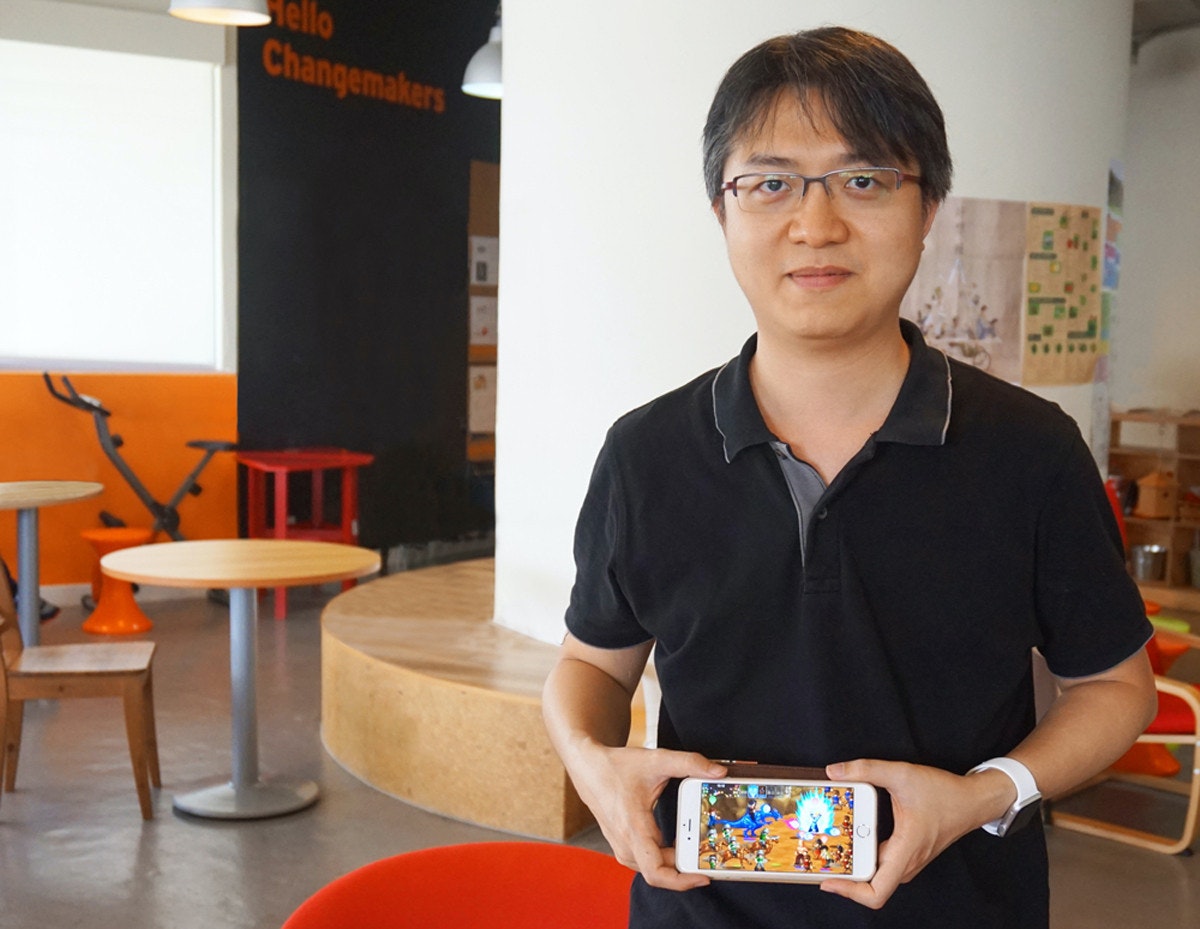
This marked a significant milestone, as it had been seven years since the initial release of Hero Fighter on PC.
Although the game may not generate significant revenue, I consider it a small triumph in terms of time and progress. It's a departure from the past, where I faced repeated setbacks and felt like I was stuck in a never-ending cycle of failure. But now, I sense a subtle shift, a glimmer of hope, and a renewed sense of purpose.
Source: Chuapp
Unrelenting Efforts
In an interview with Marti, he was asked:
In addition to traditional horizontal action game, do you plan to challenge other game types?
Source: Gameapps
And his response to that was:
Of course, what I want to do most is 2D fighting plus action real time strategy (Hero Fighter X is just a prototype). I hope to further deepen this game type, that is, a much larger real time strategy game.
Source: Gameapps
Marti's efforts to make the game survive extended far beyond the release of HFX for mobile. He exhibited a steadfast commitment to the game's success, actively seeking ways to enhance its popularity and reach. His participation in two distinct conferences on separate occasions proves his dedication to elevating the game's profile and fostering connections within the industry.
I attended 2 conferences: Casual Connect & Digital Taipei and here's the summary:
In Casual Connect, I was a bit frustrated. Not because HFX didn't get any prize. There were a few of US visitors said HFX is a copycat after watching the demo. When I asked what game did it copy. They could't tell and one said "Nevermind". it really pissed me off. I believe HFX is quite unique and has a lot of my original ideas. If they were willing to spend a few minutes to try the game, they might change their mind. May be some bad experience with some Chinese companies made them biased. I also met some LF2 and HF fans. But it seems to me that most of the US players tend to like the no-brainer and casual games. HFX is just too hard-core and "heavy" for them. I am happy to met some Indies, friends from the game industry (Hui-Ku Shih and NiTe Luo), and some publishers. We talked for a while and I figured out how to fix the monetisation problem. As I need to do the development and testing alone, it will take weeks to finish the next update.
In Digital Taipei, I met 炎羅, I truly appreciate his advice and tips. LF is still quite famous in Taiwan. I took pictures with many LF fans. Compared to the US trip, I felt much warmer in Taiwan. Besides talking to the people, I attended some seminars and learnt alot.
Now, I am back and I need to focus on the update of HFX mobile version again. I am start to doubt, should I make the steam version? It is just too slow and time consuming to do the steam in a one man team. Should I change my priority? Get rid of the indie status first before considering to do steam?

Following the conclusion of the saga, Marti Wong embarked on another journey, joining Google in Australia to pursue a new career path and earn a living. As a result, all of his existing projects were put on temporary hiatus, allowing him to devote his attention to his new career path.
Unfinished Business: Reawakening The Flame
On April 4, 2021, the nearly infinite wait finally ended. After an eternity of silence, Marti Wong, the legendary creator of Little Fighter 2 and Hero Fighter, emerged from the shadows, shattering the stillness with a highly anticipated message to the community. With a surge of enthusiasm, he announced that he's actively working on the Little Fighter 2 remastered version, rekindling the spark that had once burned bright among his devoted followers.
Letter to players of Hero Fighter (HF)
I haven't left a message here for a long time. Thank you for your continued support of this game for years. Thank you very much to the administrators of the Hero Fighter facebook group. They have been managing for more than 10 years without asking for anything in return. Special thanks to Chris, David G, David Piper (Red), John, Travis (names are in alphabetical order).
Since I announced the making of the LF2 remastered version, every day I received messages from Hero Fighter (HF) players asking me when I will continue to make HF... HF, after all, is the hard work I spent 7 years of sweat and blood to create. I want to continue to complete Hero Fighter more than anyone else. However, I have limited time, manpower and resources. Apart from working on my day job, I can only use my spare time and weekends to do LF2 remastered, so I cannot continue to develop HF for now.
You may have questions, why did I choose to do LF2 remastered instead of completing HF first? There are 3 reasons:
Compared with HF, the structure of LF2 is simpler and it has no storyline, so rewriting LF2 will be much faster than rewriting HF.
This is the first time I use Unity and publish a game to Steam. If I use LF2 as my first attempt, I believe it will encounter fewer difficulties and is suitable for starting.
LF2 is more popular than HF, and there is a greater chance of receiving enough financial support for running LF2, or even support me in developing my next game (probably HF).
That's why this decision was made. I understand some of your disappointment. I want to develop LF2 on Steam first, then I can have more experience and funds to continue HF. As for HF, I actually have the storyline in my head, but I could't develop it at the same time because of my limited energy.
I am very grateful for your support and hope that everyone will also support the LF2 remastered version and continue to pay attention to the future plan of HF.
Please feel free to leave messages in the Hero Fighter's Facebook group. Your support, encouragement and opinions will become the driving force for my creation and let me continue to making fun fighting games for everyone. Thank you!
Source: Facebook, Patreon, HFE
To prioritize this new project, Marti Wong temporarily suspended development on Hero Fighter (HF) and Hero Fighter X (HFX), channeling his energy and devoting his time in the creation of Little Fighter 2 Remastered.
Marti Wong's remarkable journey serves as a powerful tribute to the transformative power of perseverance, creativity, and unwavering dedication. His profound influence on the gaming industry has cemented a lasting legacy, inspiring a new wave of developers and gamers, and forever leaving his mark on the world of gaming.
References
The information conveyed in this consolidated article about Marti Wong was compiled from the following sources:


